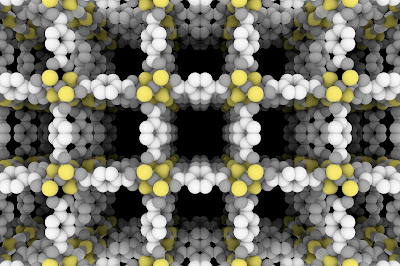Metal-Organic Frameworks: A Market on the Cusp of Exponential Growth

Metal-Organic Frameworks (MOFs) are a fascinating class of highly porous materials constructed from metal ions or clusters coordinated to organic ligands. Their unique structure, characterized by exceptionally high surface areas, tunable pore sizes, and diverse chemical functionalities, has garnered significant attention across various scientific disciplines. While still in a relatively nascent stage compared to more established material markets, the Metal-Organic Framework market is demonstrating strong growth potential, fueled by increasing research and development activities and a growing recognition of their superior performance in a wide array of applications.
The Metal-Organic Framework Market is expected to register a CAGR of 13% from 2025 to 2031, with a market size expanding from US$ XX million in 2024 to US$ XX Million by 2031.
Unlocking Versatility: Key Applications Driving Market Demand
The inherent properties of MOFs make them attractive candidates for a diverse range of applications, which are the primary drivers of market growth:
- Gas Storage and Separation: This segment currently holds a significant share of the MOF market. Their high porosity and tunable pore sizes make MOFs highly effective for storing gases like hydrogen, methane, and carbon dioxide at lower pressures compared to conventional methods. In gas separation, MOFs can selectively adsorb specific gas molecules, offering energy-efficient solutions for industrial processes like air separation, natural gas purification, and carbon capture. For instance, certain MOFs have demonstrated exceptional CO2 capture capacities, making them promising materials in the fight against climate change.
- Catalysis: The ordered structure and high surface area of MOFs provide a unique platform for catalytic applications. Metal nodes within the MOF structure can act as active sites, while the organic linkers can be functionalized to tailor the catalytic activity and selectivity. MOFs are being explored as catalysts in various reactions, including organic transformations, oxidation, and reduction processes, often exhibiting higher activity and selectivity compared to traditional catalysts.
- Sensing: The sensitivity of MOFs to specific molecules makes them ideal materials for developing advanced sensors. Upon interaction with target analytes, MOFs can undergo changes in their optical, electrical, or mechanical properties, which can be detected and correlated to the concentration of the analyte. This opens up possibilities for highly sensitive and selective sensors for environmental monitoring, industrial process control, and medical diagnostics. For example, MOF-based sensors are being developed for detecting volatile organic compounds (VOCs) and heavy metal ions in water.
- Drug Delivery: The high surface area and pore volume of MOFs can be utilized for loading and controlled release of drug molecules. Their biocompatibility and biodegradability, which are being actively researched and improved, make them promising candidates for targeted drug delivery systems, potentially enhancing therapeutic efficacy and reducing side effects.
- Water Purification: MOFs are showing promise in water purification applications due to their ability to selectively adsorb pollutants such as heavy metals, organic contaminants, and dyes from water. Their high capacity and recyclability offer potential advantages over conventional water treatment methods.
Market Dynamics: Growth Drivers and Challenges
The Metal-Organic Framework market is characterized by significant growth drivers:
- Increasing R&D Investments: Both academic institutions and industrial players are heavily investing in research and development to explore new MOF materials and their applications. This continuous innovation is leading to the discovery of MOFs with enhanced properties and performance.
- Growing Awareness and Adoption: As the benefits of MOFs become more evident through successful pilot projects and commercial applications, their adoption across various industries is increasing.
- Government Initiatives and Funding: Governments worldwide are supporting research and development in advanced materials, including MOFs, recognizing their potential to address critical challenges in energy, environment, and healthcare.
- Demand for Sustainable Solutions: MOFs offer the potential for more energy-efficient and environmentally friendly solutions in areas like gas separation, catalysis, and water purification, aligning with the growing global focus on sustainability.
However, the market also faces certain challenges:
- Scalability and Cost-Effectiveness: Scaling up the synthesis of MOFs to industrial levels while maintaining cost-competitiveness remains a significant hurdle.
- Stability and Processing: Some MOFs exhibit limited stability under certain conditions (e.g., high humidity or temperature), and developing robust processing techniques for their integration into devices and systems is crucial.
- Standardization and Characterization: The lack of standardized synthesis protocols and characterization methods can hinder commercialization efforts.
- Toxicity Concerns: For certain applications, particularly in the biomedical field, thorough evaluation of the toxicity and long-term effects of MOFs is essential.
Regional Insights and Competitive Landscape
North America and Europe currently hold a significant share of the MOF market, driven by strong research infrastructure and early adoption in key application areas. However, the Asia Pacific region is expected to witness the highest growth rate in the coming years, fueled by increasing 1 industrialization, government support for advanced materials, and growing environmental concerns.
The competitive landscape of the Metal-Organic Framework market is evolving. It includes established chemical companies, specialized material science firms, and numerous research institutions and startups. Collaborations and partnerships between these players are crucial for accelerating the commercialization of MOF-based technologies.
Looking Ahead: A Bright Future for MOFs
Despite the existing challenges, the Metal-Organic Framework market holds immense promise. Continued research and development efforts focused on addressing scalability, stability, and cost issues will pave the way for wider commercial adoption. As more application areas mature and the performance advantages of MOFs become increasingly apparent, the market is poised for substantial growth in the coming decade. The unique properties and versatility of these fascinating materials position them as key enablers for innovation across diverse sectors, contributing to a more sustainable and technologically advanced future.



Comments
Post a Comment